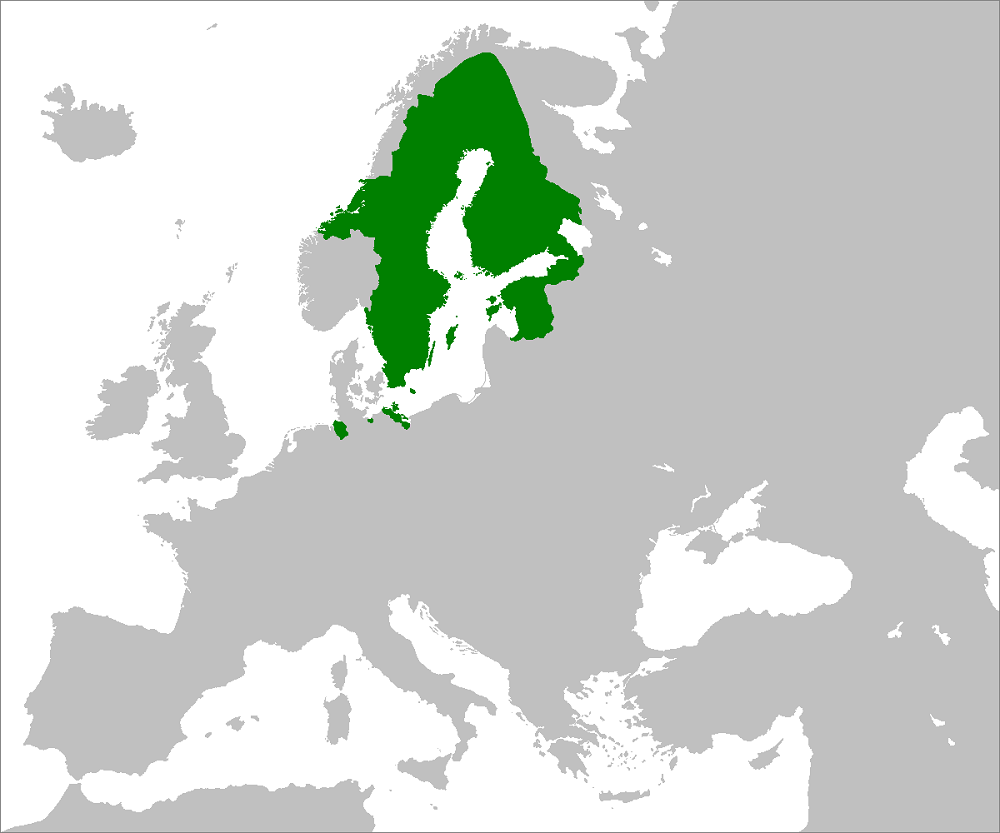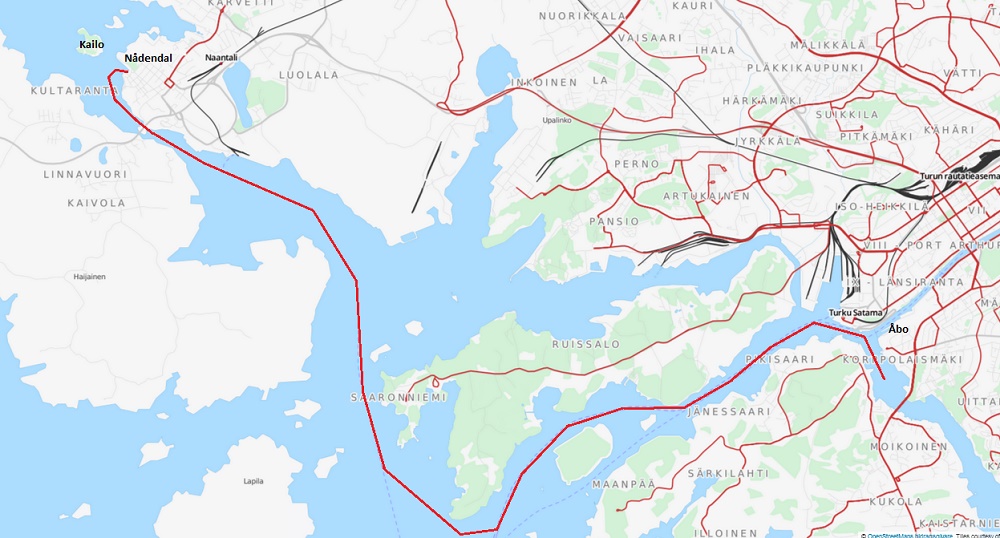
 1981
1981


To Finland, my first night at sea
Aland, Finland and Gotland by Johan Kjellander 2014
Summer 1981 I sailed to Finland with my trawler Etoile. Mostly single handed, but in Helsinki my brother Anders met up and we sailed back to Sweden together. I wanted to extend my experience of long distances so we took the route from Hangö on the south tip of Finland to Fårösund on Gotland, almost 200 NM without land contact.
I started in Örebro in June and sailed through lake Hjälmaren and Mälaren to Stockholm and then to Mariehamn on Åland. I have sailed this route many times and described various parts of it in other log books (e.g. 1980, 1984, 2009-2011) so this year I will let the log book start in Mariehamn on Åland and end in Fårösund on Gotland.
I only have two pictures from the trip to Finland. My brother took them 1981 and I scanned them 2014. The rest of the pictures, as usual, I have collected from various websites on the Internet or created myself with the help of screen dumps from OpenStreetMaps.
Left: Swedish empire 1650, by Zakuragi, © CC BY-SA 3.0
The Swedish and Finnish people have a lot in common but are originally of different origin. 10.000 years ago Scandinavia was covered with ice. As the climate turned warmer the ice withdrew and people started moving in from the south. If you look at the map above you see that it was quite natural for Sweden and Norway to be populated from south through Denmark while it was easier to reach Finland from the east. A good proof of this is that Finnish language is very different from Swedish while Norwegian and Danish are much more similar.
In the middle ages Sweden turned into a kingdom while Finland was still sparsely populated and less organized. Swedish sailors and tradesmen (Vikings) had a long tradition of travelling east on the Baltic and it was therefore natural that Finland later was incorporated under the Swedish crown. Finland was formally a part of Sweden from 1249 until 1809 when it was lost to Russia through war.
The area between Åland and the Finnish mainland is one of the worlds biggest archipelagos. Wikipedia estimates the number of larger or smaller islands etc. to more than 50.000. There are 18.000 islands larger than half a hectare of which many are inhabited and a total of 33.000 people live in the archipelago. Sailing here during the summer is fantastic. Life on the islands is different from the stressful life in the city and people are very hostile.
Mariehamn - Helsingfors
I left Mariehamn on Åland, sailed east in the archipelago and spent the first night i Degerby which is a charming little village on the island of Degerö. My plan was to continue to Åbo which is Finlands oldest city, established by the Swedish crown during the 13:th century. For a long time Åbo was the centre of Swedish administration in Finland and during this time many Swedes moved in, often to take higher positions in society.
Åbo Akademi, Photo by Samuli Lintula, © CC BY-SA 3.0
After the war with the Russians 1809 many Swedes fled Finland and today there is only a minority left (5%), with Swedish as native language. The only Swedish university in Finland is Åbo Akademi, with 7000 students. Link to Åbo Akademi.
Joutsen in Aurajokki, Photo by Jari Sjölund, © CC BY-SA 2.0
One of the first things I saw when I arrived to Åbo 1981 was the tall masts of the sailing ship Joutsen. It was tied up in Aurajokki river that runs through the center of the city and I found a mooring for Etoile right in front her. Today she is part of a big maritime museum, the Forum Marinum. Link to Forum Marinum.
In Forum Marinum you can also see Daphne, the famous boat owned by author Göran Schildt 1947-84 while he wrote books like Önskeresan, I Odysseus Kölvatten and Farväl Daphne describing his voyages and the culture in the countries around the Mediterranean.
Less than 10 NM north west of Åbo lies a nice little village named Nådendal. It has a good marina and many sailors come here every summer. I spent several days in Nådendal walking around and enjoying the views. I specially remember a long wooden walkway that lead out to a small island with a restaurant.
Left: Mumin World, Photo by Kallerna, © CC BY-SA 3.0
Right: Mother Mumin, Photo by Kallerna, © CC BY-SA 3.0
This little island was Kailo but today the restuarant is gone and replaced by Mumin World, a theme park devote to the Mumin characters, a family of friendly trolls invented by the Finnish/Swedish writer Tove Jansson. The books about the Mumin Trolls have always been well known in Scandinavia but also had an international break through during the nineties, specially in Japan.
I now turned south to round Cape Hangö and then continue to Helsingfors. The strategic position of Hangö in the entrance of Gulf of Finland has always been important. Swedish Vikings used Hangö as a base more than a 1000 years ago on their voyages further east and south on the big rivers to the Black Sea.
Later, Hangö was fortified by Swedish military but was lost to Soviet during the second world war and used by them for a short time as a military base. After a year the base was moved to Porkala closer to Helsingfors where it stayed until 1956 when the Soviet Union finally turned it back to Finland.
Today Hangö is a mixed Swedish (45%) and Finnish (55%) city with many tourists during the summer. Each year the big sail race Hangöregattan is organized with more than 200 boats participating.
I left Hangö and sailed east along the south coast of Finland. Once again a large archipelago develops. I took the inner route and spent the night in Barösund. Next day I was approaching Helsingfors (Helsinki) and the first thing you see are islands with old fortifications.
Left: Sveaborg from above, Photo by Migro, © Public Domain
Right: Sveaborg close up, Photo by Dennis Jarvis, © CC BY-SA 2.0
It was Sveaborg, a big fortification that spans several islands protecting the inlet to Helsingfors harbour. It was built by the Swedes in 1750 but lost to the Russians in 1809, together with the rest of Finland of course. After the Russian revolution in 1917 Finland became independent and Sveaborg is now one of the most popular tourist attractions in Helsingfors, listed by UNESCO as a World Heritage.
Helsingfors was founded 1550 by the Swedish king Gustav Vasa, but was only a relatively small city for a long time. Åbo on the west coast (closer to Sweden) was then the capital. When Finland became part of Russia 1809, Tsar Alexander decided to make Helsingfors the new capital (closer to Russia), and it still is.
Left: Blekholmen, Photo by Banderas, © Public Domain
Right: South harbour, Photo by Henri Bergius, © CC BY-SA 2.0
The main marina in Helsingfors is located on Blekholmen in the South harbour and owned by Finlands largest sailing club Nyländska Jaktklubben. They have run this marina for over a century and when I was there 1981 many old traditions were still in use. Every evening for example, at nine o´clock a club officer came out of the building and fired a shot with a small canon. This was a signal to the yachts in the marina to take down their flags for the night.
Here is a picture of Etoile on a mooring at Blekholmen marina 1981. Until now I had been single handed but my brother arrived in the red passenger ship in the background and made me company back to Sweden.
Helsingfors - Gotland
With the help of my brother I was now going to sail a longer distance than I had ever done before, almost 200 NM from Hangö to Fårösund on Gotland. We sailed back to Hangö the same way I came a few days earlier and after a night there, we left early in the morning for Gotland. The weather was a little rainy with moderate visibility but the wind was good. We decided to start on a westerly course and turn south later straight for Gotland. Compass and log were the only navigational instruments we had.
Sometime in the afternoon we changed our course to south west and headed directly for Gotland. As we were leaving Finland and entering international water, a Finnish Coast Guard vessel approached us from behind and followed us. I waved at them and then they left. Maybe they had spotted us on their radar and saw us turning south from the usual westerly route back to Sweden. We still don't, know but I suppose they thought we behaved strangely. How could they know that I wanted to take the longest possible way back home?
Night fell and we sailed on. Speed was good and everything went fine. The rain reduced the visibility so we had to keep a sharp lookout but Etoile had a comfortable doghouse with big windows that kept the wet and cold away. This was the first time in my life I sailed a whole night far out at sea. We took shifts with the rudder so that one of us could get some sleep but I remember that when dawn came, we were both very tired.
On the after noon day 2 we hoped to get a glimpse of Gotska Sandön which we were supposed to pass to the east. This would be a good test of our navigation. We stared and stared through our starboard window and then finally, there she was! Gotska Sandön, a relatively low uninhabited island with long sand shores and no harbour. Our navigation turned out to be more or less perfect. Now we had only 25 NM left to Fårösund and we even managed to be there before dark.
I still remember how proud I was late that evening when we were sitting on a bar in Fårösund talking with the crew of a boat that arrived the same day from Stockholm. They had sailed 80 NM but we had sailed almost 200!
After a days rest we sailed back to the Swedish mainland, followed the coast north and entered lake Mälaren through Södertälje. A few days later I was back in Örebro. As I have sailed this route several times before I will not describe the trip back to Örebro in detail. If you want more about Gotska Sandön, Fårö or Gotland, check the logbooks from 1983 and 2011. At the end of the season, the log for 1981 showed 1237 NM.



















